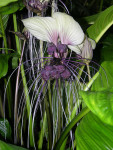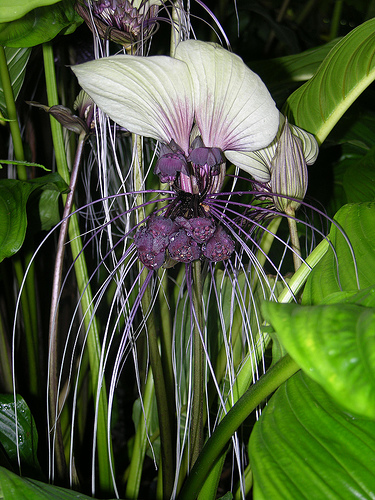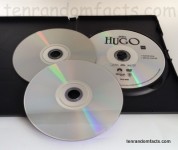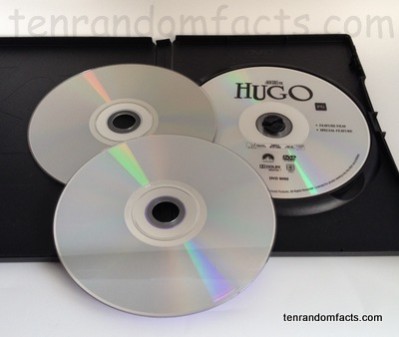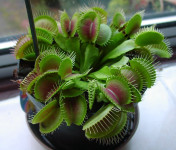
Don’t get caught in the Venus flytrap!
- Venus flytraps are a species of small insect-eating plants that grow from rhizomes, that are native to eastern subtropical United States.
- The scientific name of the Venus flytrap is Dionaea muscipula, and it is from the Droseraceae family, the family of sundews; and the species is the only one in its genera.
- ‘Venus flytraps’ are also known as ‘Venus fly traps’ and ‘Venus’ flytraps’; and they are of a bright green to red colour, with up to seven leaves that have a pink to red interior surface; and the plant grows to approximately 20 cm (7.9 inches) in diameter.
- The traps of the Venus flytrap are also the leaves, and they are a hinged pair of almost semi-circles, with what look like eyelashes on the outer edges.
- Two to five trigger hairs are found inside each part of the Venus flytrap trap, which triggers the trap to close on contact with an object, and they can close in less than a second, at approximately 100 milliseconds.
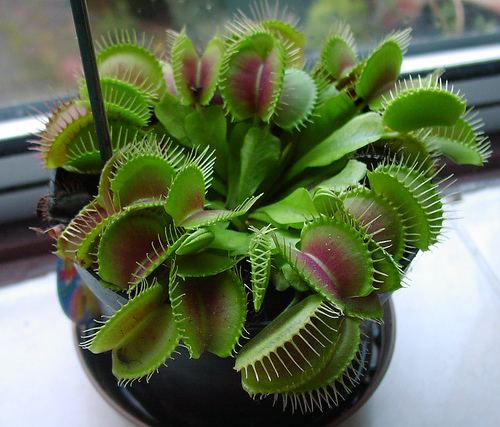 A Venus Flytrap
A Venus Flytrap
Image courtesy of Alex Chief/Flickr
- Once something is trapped, Venus flytraps exert digestion fluids to dissolve the inner body of the prey into an absorbable liquid, while the inedible exoskeleton is disposed of after the traps reopen.
- To avoid closing from non-food triggers such as dust, Venus flytrap traps will only close if more than one of its trigger hairs is touched in a period of twenty seconds from the first touch.
- Venus flytraps most often capture and eat ants and spiders, but they also catch other insects including beetles; and it takes from 5 to 12 days to digest its caught prey, the time dependent on the prey size and other conditions.
- If an inedible object falls into a Venus flytrap trap, the trap will reopen and dispose of the object in about half a day after trapping.
- Venus flytraps bloom small flowers coloured white, that cluster at the top of the plant, and after flowering the plant often produces many tiny seeds that are black in colour.
Bibliography:
Diaonaea muscipula (Venus Flytrap), n.d, KEW Royal Botanical Gardens, http://www.kew.org/science-conservation/plants-fungi/dionaea-muscipula-venus-flytrap
The Mysterious Venus’ Flytrap, n.d, Botanical Society of America, http://botany.org/bsa/misc/carn.html
Venus Flytrap, 2016, Wikipedia, https://en.wikipedia.org/wiki/Venus_flytrap





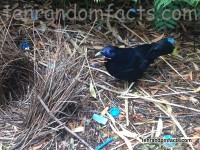
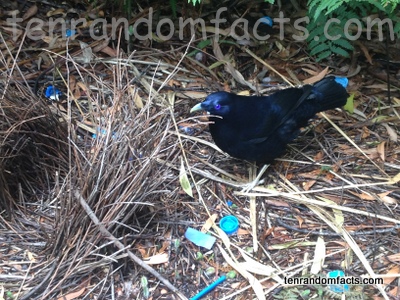


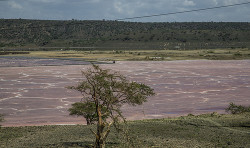


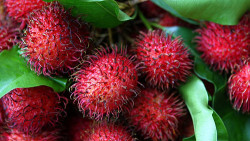
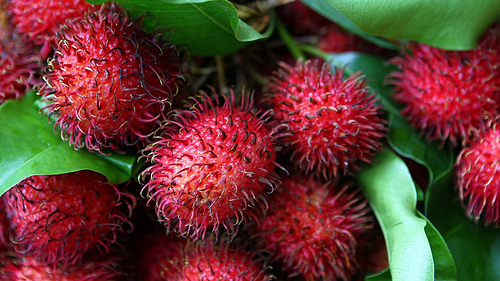 Rambutan
Rambutan